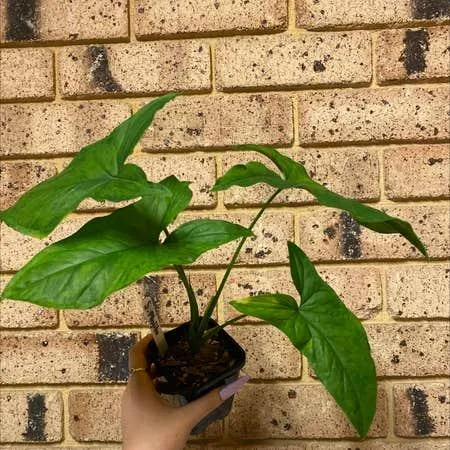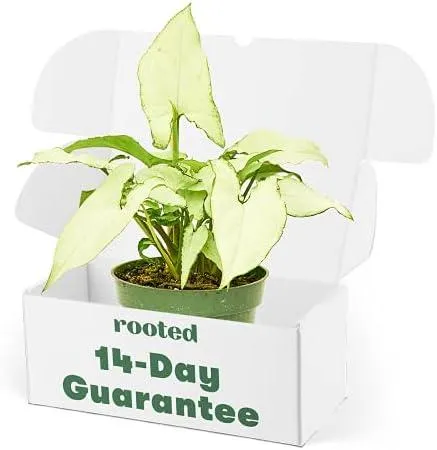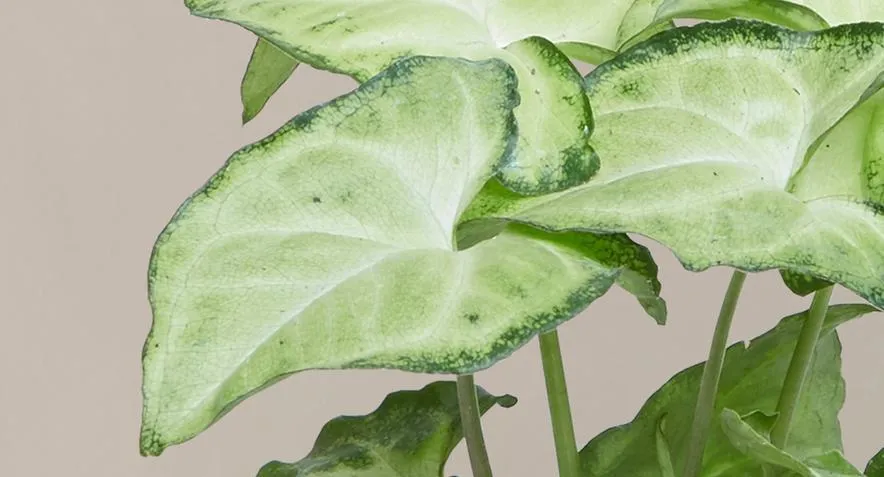Your Complete Guide to Caring for Syngonium Black Velvet
The Syngonium black velvet is a beautiful plant with dark, velvety leaves that makes an excellent addition to any home or office. In this article, I will answer all the common questions people have about this plant and provide tips on how to keep it healthy and thriving. By the end, you’ll have all the knowledge you need to care for your own syngonium black velvet like a pro!
What is Syngonium Black Velvet?
Syngonium black velvet, also called African honeycomb or arrowhead vine, is a tropical flowering plant native to Central and South America. It belongs to the Araceae family, along with other popular houseplants like philodendrons and dieffenbachias. What makes the syngonium black velvet unique is its rich, dark green leaves that have a beautiful velvet texture.
The leaves emerge lime green in color when young but quickly darken to a near-black hue as they mature. They have distinctive arrow-shaped lobes and light green undersides. Syngonium black velvet is a trailing vine that can grow up to 10 feet long as a hanging plant but stays compact when grown as a tabletop plant. It makes an awesome accent plant and its dark leaves really stand out against lighter decor.
Light Requirements
When it comes to lighting, syngonium black velvet is pretty flexible. It can tolerate low to medium indirect light but thrives best in bright, indirect sunlight. Direct sun may cause the leaves to burn or fade in color. East- or west-facing windows provide the perfect illumination. I keep mine on a table near a large south-facing window, and the velvet texture of the leaves looks amazing. Avoid dark corners where it won’t get much light.
Watering Needs
Like most tropical plants, syngonium black velvet prefers moist soil but not soggy wet soil. The best approach is to let the top inch or two of soil dry out between waterings before watering thoroughly again. Then dump out any water left in the drainage tray thirty minutes later. Overwatering can cause root rot, but under-watering will cause the leaves to drop and turn brown at the edges. When in doubt, err on the side of less water. You can also use a moisture meter to check soil moisture.

Humidity Levels
While syngonium black velvet is relatively easy to care for, it does appreciate moderate humidity levels around 50%. In low humidity environments, the tips of the leaves may brown or curl. For extra moisture, use a pebble tray or humidifier near the plant. You can also mist the foliage with a spray bottle. I have found that using a humidifier in my home has made a big difference in preventing brown tips on my syngonium black velvet and other tropical plants.
Fertilizing
When the plant is actively growing from spring to fall, fertilize every 4-6 weeks with a balanced houseplant fertilizer diluted to half or quarter strength. I like to use a water-soluble 20-20-20 formulation. Be sure to flush with plain water after feeding to prevent fertilizer burn. In the winter when growth slows, you can reduce fertilizer to every 8 weeks. Over-fertilizing can cause brown or yellow leaf tips, so go lightly. Well-draining soil is key so excess fertilizer doesn’t build up in the pot.
Soil Mix
The best potting mix for syngonium black velvet drains well while retaining enough moisture. I’ve had great results using a homemade mixture of 1 part potting soil, 1 part perlite or orchid bark for drainage and aeration, and 1 part peat moss or compost to retain moisture. Pre-mixed “indoor potting soil” from garden stores also does the job well. Avoid heavy clay or soil-based mixes that stay soggy. Repot every 1-2 years or when roots fill the container.
Pruning and Propagation
- To encourage bushy growth and prevent legginess, prune off leggy or misshapen stems as needed with clean pruning shears.
- Syngonium black velvet is very easy to propagate from stem or leaf cuttings. Simply remove 4-6 inch sections, remove lower leaves, and plant the cuttings in moist potting mix. Roots will form within 2-4 weeks.
- You can also start new plants by placing leaf cuttings with 1-2 lobes in water. When roots form in 2-4 weeks, transplant the rooted leaves to soil.
Pests and Diseases
Generally, syngonium black velvet is pretty resistant to most pests and diseases. However, you may see occasional issues with common houseplant pests like spider mites or mealybugs. I had a bad infestation of spider mites once that was a real pain to get rid of. Make sure to regularly check leaf undersides and stems. If you spot any pests, isolate the plant and spray down both sides of leaves with insecticidal soap or neem oil as directed on the label. Proper care and prevention are key to keeping your plant bug-free.
Toxicity
While syngonium black velvet is not considered highly toxic like some other houseplants, it’s still best to keep it out of reach of children and pets. All parts of the plant contain calcium oxalate crystals that can cause minor mouth irritation if ingested. Symptoms are usually mild and include nausea, vomiting, or diarrhea. As with any plant, seek medical help if toxicity is suspected.

Plant Care Checklist:
Here’s a quick checklist to keep your syngonium black velvet happy and thriving:
Light: Bright, indirect light
Water: Allow soil to dry slightly between waterings
Humidity: Keep above 40% with pebble tray or humidifier
Temperature: 65-80°F
Fertilizer: Every 4-6 weeks in spring-fall
Potting Mix: Well-draining, airy potting soil
Pruning:Remove leggy stems as needed
Pests: Check regularly and treat issues promptly
I hope this guide gave you all the information you need to successfully care for your syngonium black velvet. Let me know if you have any other questions! Proper light, moisture, and fertilizer will help your plant thrive for years to come.
Syngonium Black Velvet Care Guide
| Common Name | Syngonium Black Velvet |
|---|---|
| Botanical Name | Syngonium podophyllum ‘Black Velvet’ |
| Light Requirements | Bright, indirect light. Avoid direct sunlight which can scorch leaves. |
| Water Requirements | Allow soil to dry slightly between waterings. Water when top inch of soil is dry. |
| Temperature Range | Between 65-80°F for best growth. Can tolerate temperatures as low as 50°F. |
| Humidity Requirements | Moderate humidity preferred. Mist leaves occasionally if humidity is low. |
| Fertilizer | Feed monthly in spring and summer with a balanced houseplant fertilizer diluted to package instructions. |
FAQ
-
What is a syngonium black velvet plant?
A syngonium black velvet plant is a very popular houseplant with dark, almost black-colored leaves. It basically belongs to the syngonium genus, which are known for their arrowhead-shaped leaves. This variety is unique because the leaves develop a stunning dark hue.
-
Why are the leaves black?
The leaves turn black due to a natural process called anthocyanins. Anthocyanins are pigments that form in the leaves when the plant is stressed or exposed to lots of sunlight. They act kind of like a natural sunscreen, protecting the plant. So full sun brings out the blackest color. Isn’t that cool how plants adapt?

-
How much sunlight does it need?
Amazingly, syngonium black velvet thrives in bright, indirect sunlight. Too much direct sun may burn the leaves, turning them brown instead of black. But insufficient light means the leaves won’t darken up much. Maybe place it in an east or west window where it gets morning or afternoon filtered light. Give it abundance of sunlight and watch the stunning black foliage develop!
-
What kind of soil does it prefer?
Most plant experts agree this plant does best in rich, well-draining potting soil. The soil shouldn’t stay soggy or the roots may rot. You could use a potting mix combined with perlite or bark to keep the moisture at a good level. And don’t go overboard watering it, or it may end up unhappy. Listen to the soil – it’ll tell you when it’s dry. Pretty easygoing as long as you don’t drown the poor thing, right?
-
How often should it be watered?
In general, allow the top few inches of soil to dry out between waterings. You don’t want to leave it bone dry for too long, but you also don’t want to keep it wet constantly. Perhaps water it once every 7 to 10 days seems about right for most homes. But it also depends on the weather, humidity and how fast the soil dries out. Pay attention and you’ll find the right schedule for your plant.
-
Does it need fertilizer?
During the growing season from spring to fall, you can give it a diluted liquid houseplant fertilizer every few weeks. But the rest of the year, its needs are pretty minimal. Maybe just use rainwater or room temperature tap water instead of cold water direct from the tap. However, too much of a good thing can harm plants too. Moderation is key, as with many things in life!
-
Is it toxic to pets or children?
Most plant guides suggest syngonium plants are not considered toxic. Nevertheless, it’s always a good idea to keep potentially questionable plants out of reach of little kids and pets just to be safe. You probably don’t want pets nibbling your beautiful leaves and making a mess anyway! Overall, it seems to be a pretty tolerant, low-maintenance houseplant.

- What are some good tips for caring for a syngonium black velvet plant long-term?
Some tricks for keeping your syngonium thriving include providing the right conditions, monitoring for pests or signs of stress, repotting it occasionally to allow more room for roots to spread, and trimming or propagating it to keep a bushy shape. Proper care will help your stunning black plant be a conversation piece for many years to come!
